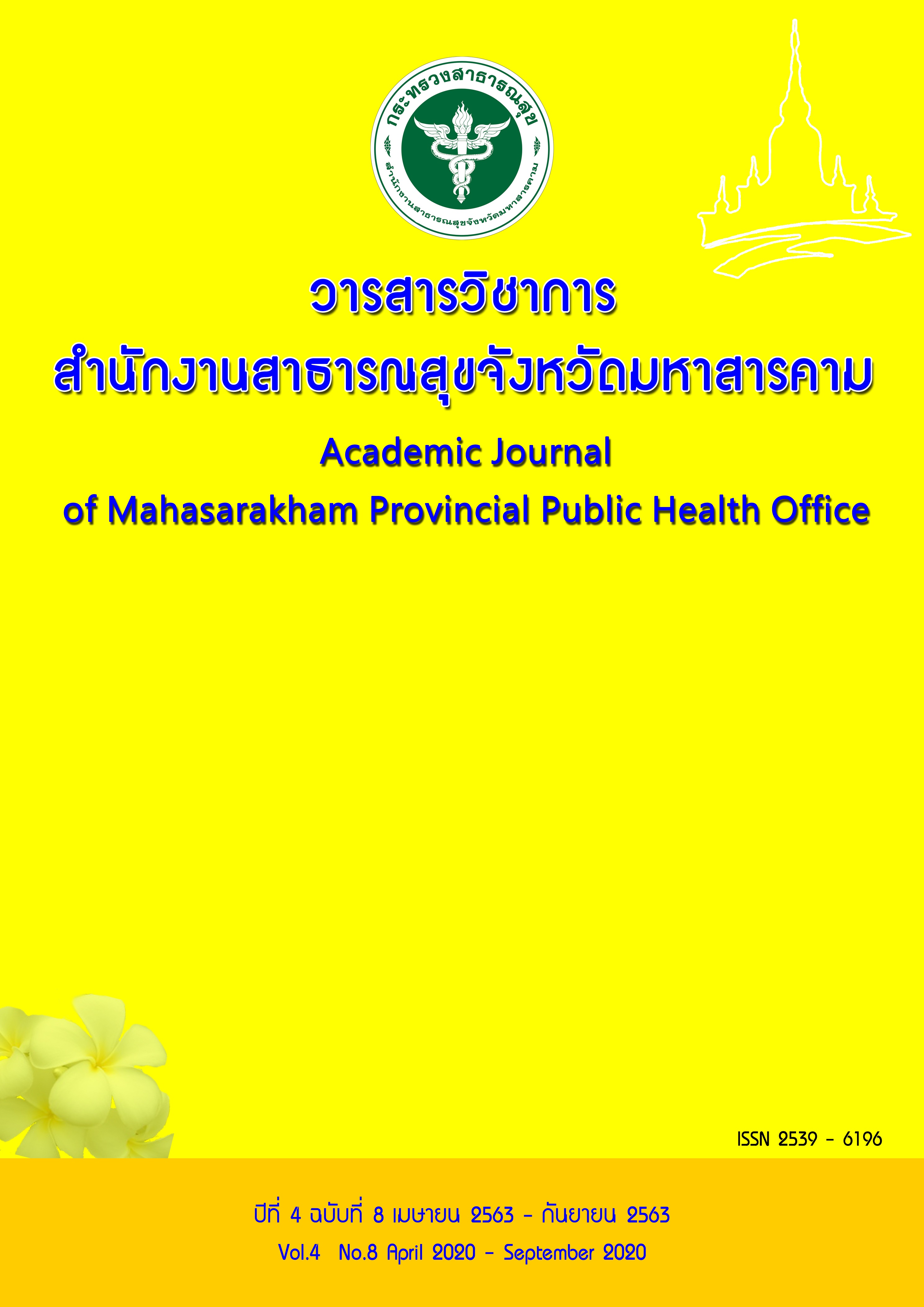Factors Affecting the Prevention and Control Behavior of Dengue Hemorrhagic Fever of Village Health Volunteers (VHV) at Wachirabarami District Phichit Province
Abstract
Abstract
This research This descriptive research aimed to study the prevention and control behavior of dengue fever of village health volunteers (VHV), Wachirabarami District. Phichit Province Study of factors affecting the behavior of prevention and control of dengue fever of VHV, Wachirabarami District. Phichit Province And study the problem Obstacles and Guidelines for the Development of Dengue Prevention and Control Behaviors of Volunteer Village,Wachirabarami District Phichit Province The sample group was VHV. Wachirabarami District Phichit Province The survey responds to 270 people, 14 networked associates, questionnaires and group discussions. And has been examining the content validity Difficulty and Confidence of the Questionnaire Analysis of factors affecting dengue prevention and control behavior. Inferential statistics including t-test and one-way ANOVA and Multiple Regression were used to predict factors affecting dengue prevention and control behaviors. And briefing
The results showed that 68.89% of the sample were female, 31.11% were male, with a mean age of 49.61, completed elementary school 50.37%, agriculture 70.37%, marital status, 81.11%, the average family income was 11,658.52 baht. Per month In the average family of 4.28, most of them consisted of 2-5 people, 80.74% were family heads, 48.89% of the time of working was 11.69 years. The average length of time working on dengue prevention and control is 10.60 years, with 8.84 households / roofs on average. Most of them had roles or levels of VHV at village level, 88.89% of them had other positions or social roles, such as village directors the most, 54.44%, and 11.48% of their family members had been sick with dengue fever. Receive training or meetings related to dengue prevention and control every time (12 times per year) 49.63 percent and received information about dengue fever. Through media, people were health workers, VHV, or family / community the most 71.11 percent.
Information on leading factors, contributing factors, auxiliary factors, including knowledge, attitude, resource sufficiency. Having the skills to use resources Support and motivation were at the most moderate level. The behavior of the prevention and control of dengue fever was at the moderate level of 70.37%, the low level 17.04% and the high level 12.59%
When analyzing the factors affecting the prevention and control behaviors of VHV with inferential statistics, namely t-test and one-way ANOVA, it was found that supplementary factors were supportive and effective. And getting motivated They had
a statistically significant effect on prevention and control behavior of Dengue fever at 0.05 level. Leading factors and contributing factors had no effect on the prevention and control behavior of dengue fever of VHV. The multiple regression analyzes were analyzed to find common factors affecting the behavior of prevention and control of dengue fever of VHV using multiple regression for forecasting. Get support Affected the prevention and control behavior of dengue fever of the VHV, respectively (R = 0.594).
Suggestions should be made to formulate a policy to support the Dengue fever prevention and control operation of the VHV. Phichit Province Both at the district and sub-district level in order for all concerned sectors to seriously support
Keywords : Prevention and control behavior of dengue fever Village health volunteers (VHV) Leading factors Support factors Extra factors


